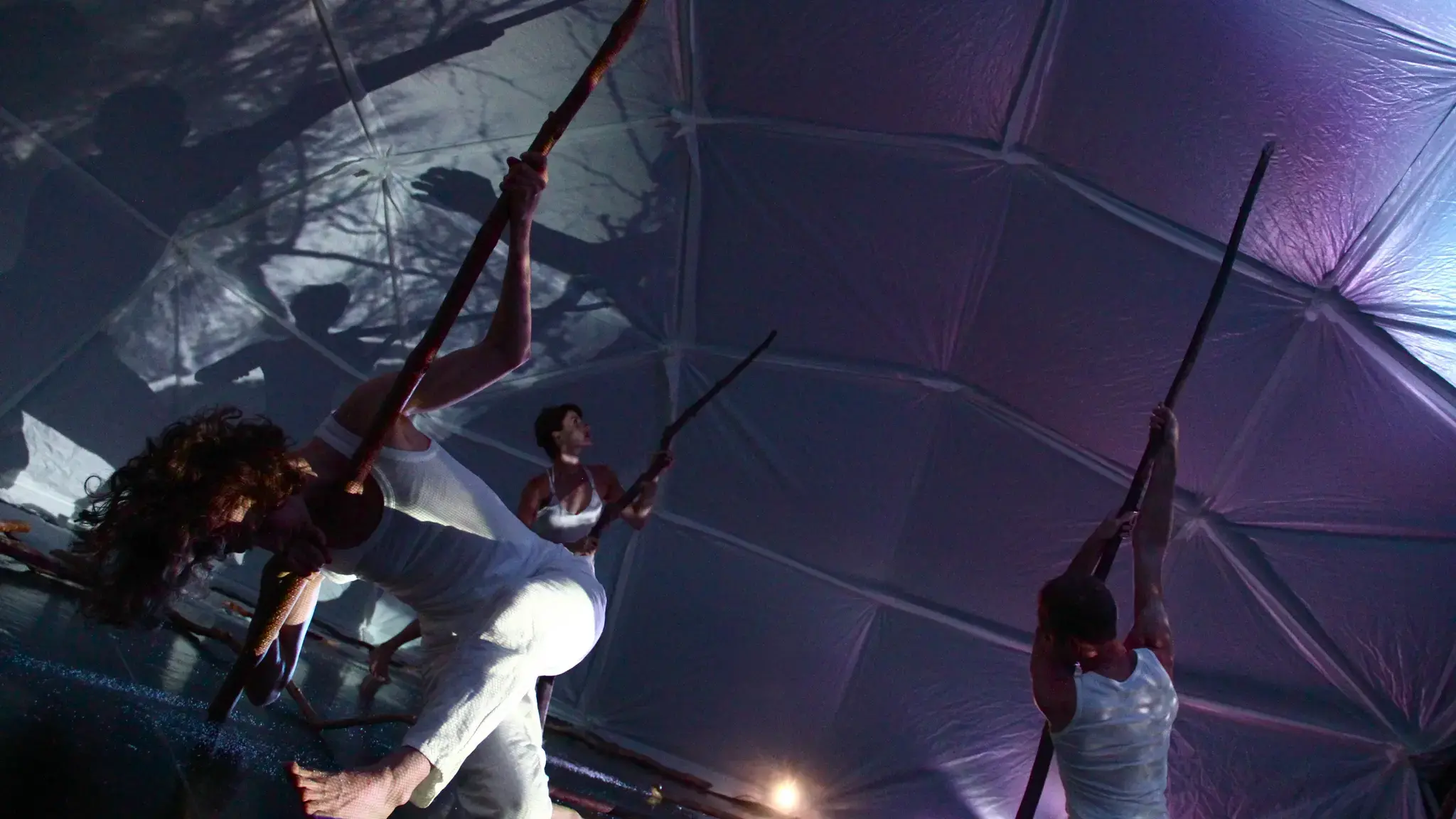

SoMoS is an outdoor dance and multimedia installation event that took place on Friday, October 13, 2012 for two performances only. The work was the culmination of multiple years of performance research by its choreographer and director Merián Soto, and was supported by The Pew Center for Arts & Heritage.
A signature of SoMoS is the use of tree branches as a talisman for helping the body transform the response of the observer, connecting both the performer and the audience member to renewed ideas of time and touch. SoMoS derives from the word “soma”—the body.
Soto’s work investigates the relationship between interior and exterior states or conditions of performance. She has taken inspiration from artists such as dance/film/video artist Elaine Summers, dance improviser David Zambrano, and video artist Bill Viola. We asked someone with similar interests to speak with Soto about SoMoS: 2011–13 Center Visiting Artist Ain Gordon.
On, Monday, October 8 at 1 p.m., I dialed Merián Soto.
She answered.
We both resorted to speakerphone. On my end, reception broke up—on her end, call waiting caused a disconnect. She called back.
She is preparing for performances; I’m doing what I’m doing.
We tried to be where we were at the moment—on the phone, together, but not.
We found our way into a conversation about being in the moment as it relates to site, transplanted site, community as site, body as site, maybe memory as site. What follows is all approximation, not verbatim quote. I tried to listen, not just type.
I asked about the role of improvisation in her coming performances…
Merián Soto: I am an improvisational artist. That’s what I teach. I used to be one of those dancers who could repeat a move exactly—but when I trained myself to be an improvisational artist I found I can’t exactly do that anymore because I am responding to the moment. A lot of my quest related to this project has to do with being in the present. For me, being in the present has to do with responding.
I asked about the role of embodiment…
MS: Being “present” is all about embodiment. When we branch dance, we simply connect. We move into another state of awareness. What (originally) happened to me was that I would go to the woods and try to become invisible. In that quest, one day, I picked up a branch and immediately entered into the zone. The touch completes a cycle of awareness of sensing and action, gravity and weight. Balance. We balance the branch and balance the energy of contact throughout the whole body. It’s minimal but poetic when we go into that state. The branch feels something like a wizard’s staff.
I asked about the role of site…
MS: This particular site is a challenging one. The parking lot is in the barrio; this will be the site of Taller Puertorriqueño’s new building. It’s a little bit like we’re giving the site a blessing before the building fills the space.
I asked about calibrating the material given that the audience can come and go…
MS: Not so sure yet—this is so new. If people stay, that tells me something. When I have been working in the parking lot without any of the production elements that make the performance so enchanting, when we work in the afternoon, neighbors come out and sit on their steps and watch us. Kids will hang out and watch; they play, but they pay attention.
SoMoS was created and choreographed by Merián Soto and performed and co-choreographed by Olive Prince, Jumatatu Poe, Marion Ramírez, Beau Hancock, and Jung Woong Kim. Merián Soto Performance Practice is presented by Taller Puertorriqueño’s “Café Under the Stars: Spotlighting the arts in El Barrio” series.